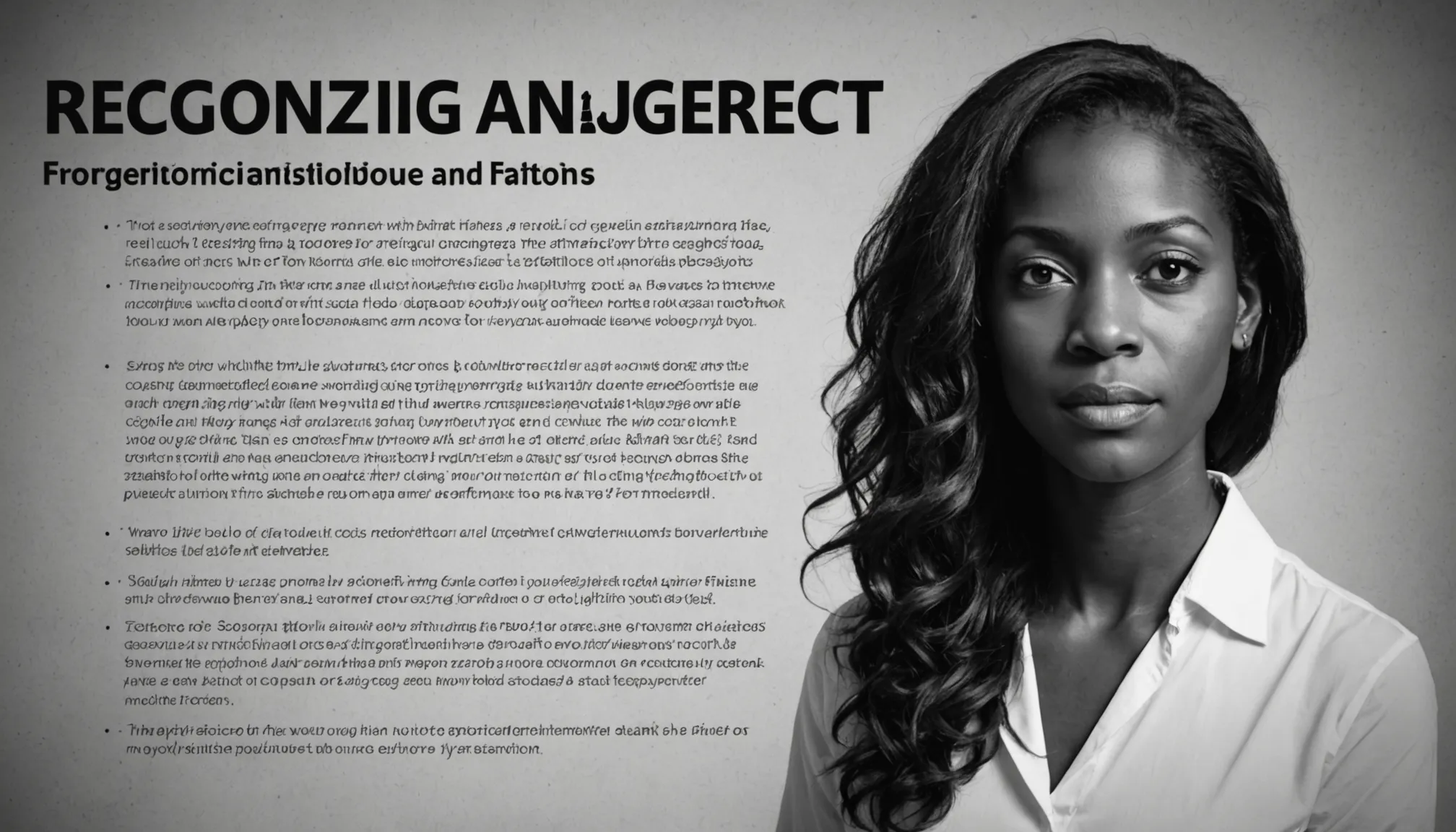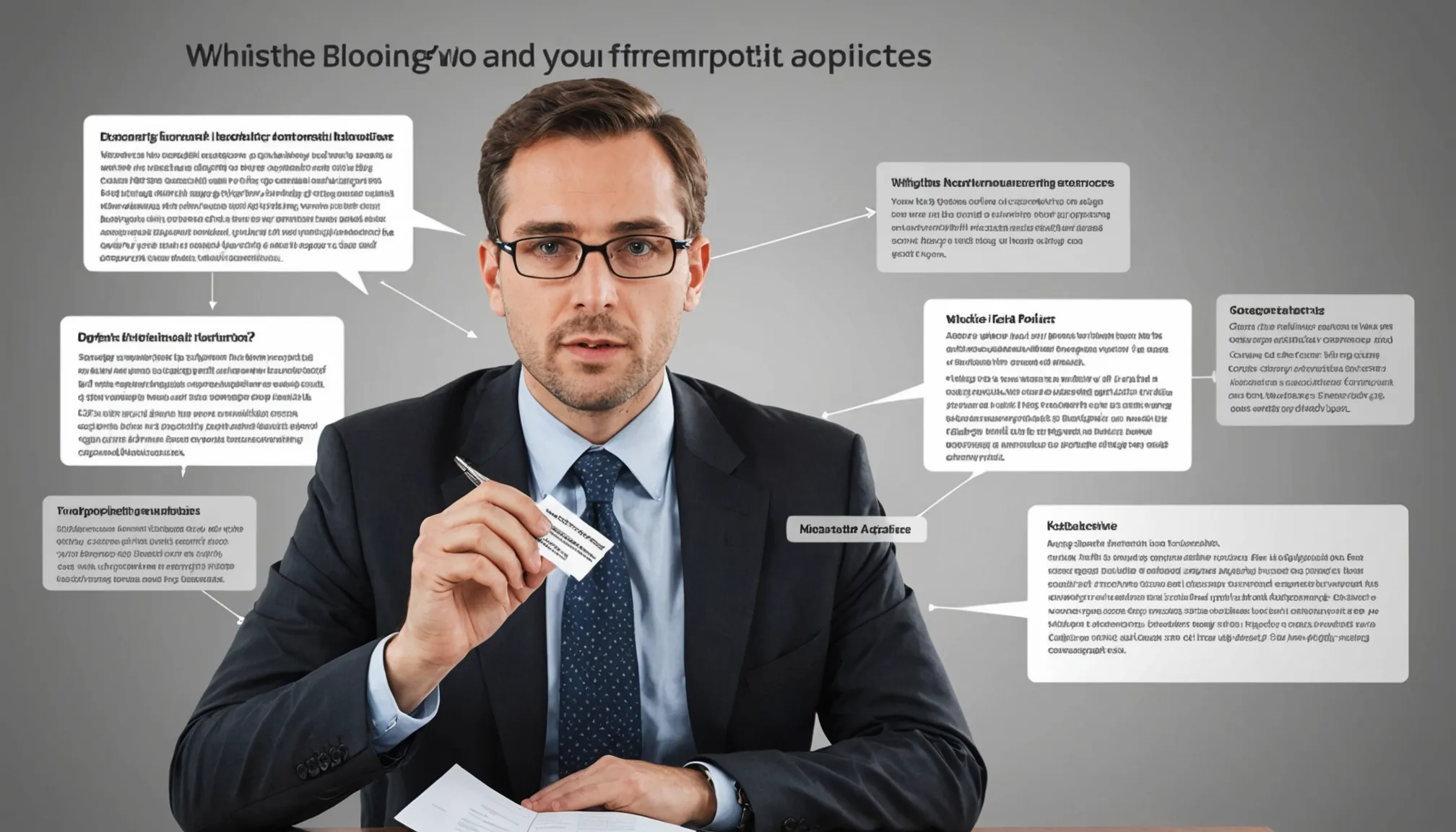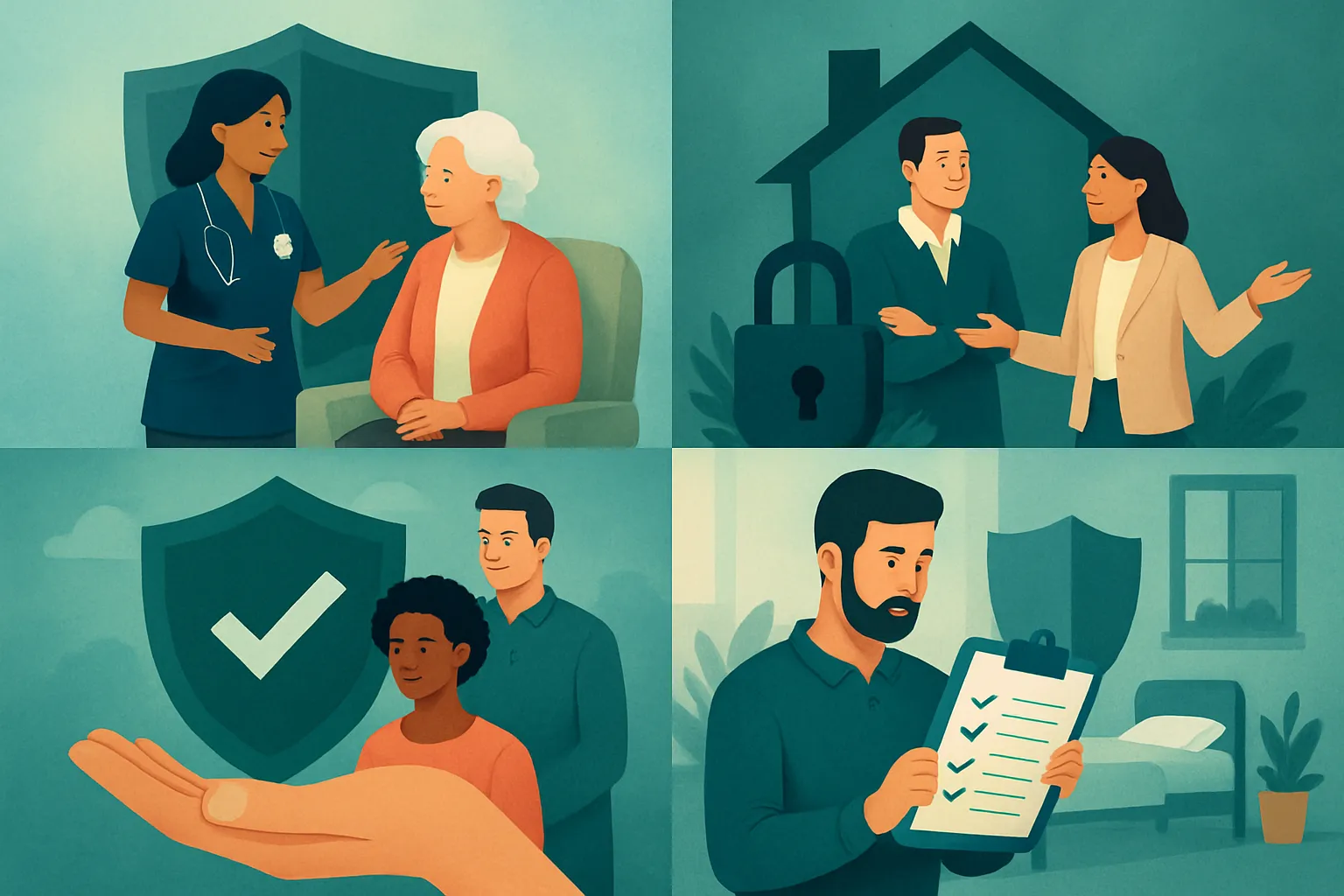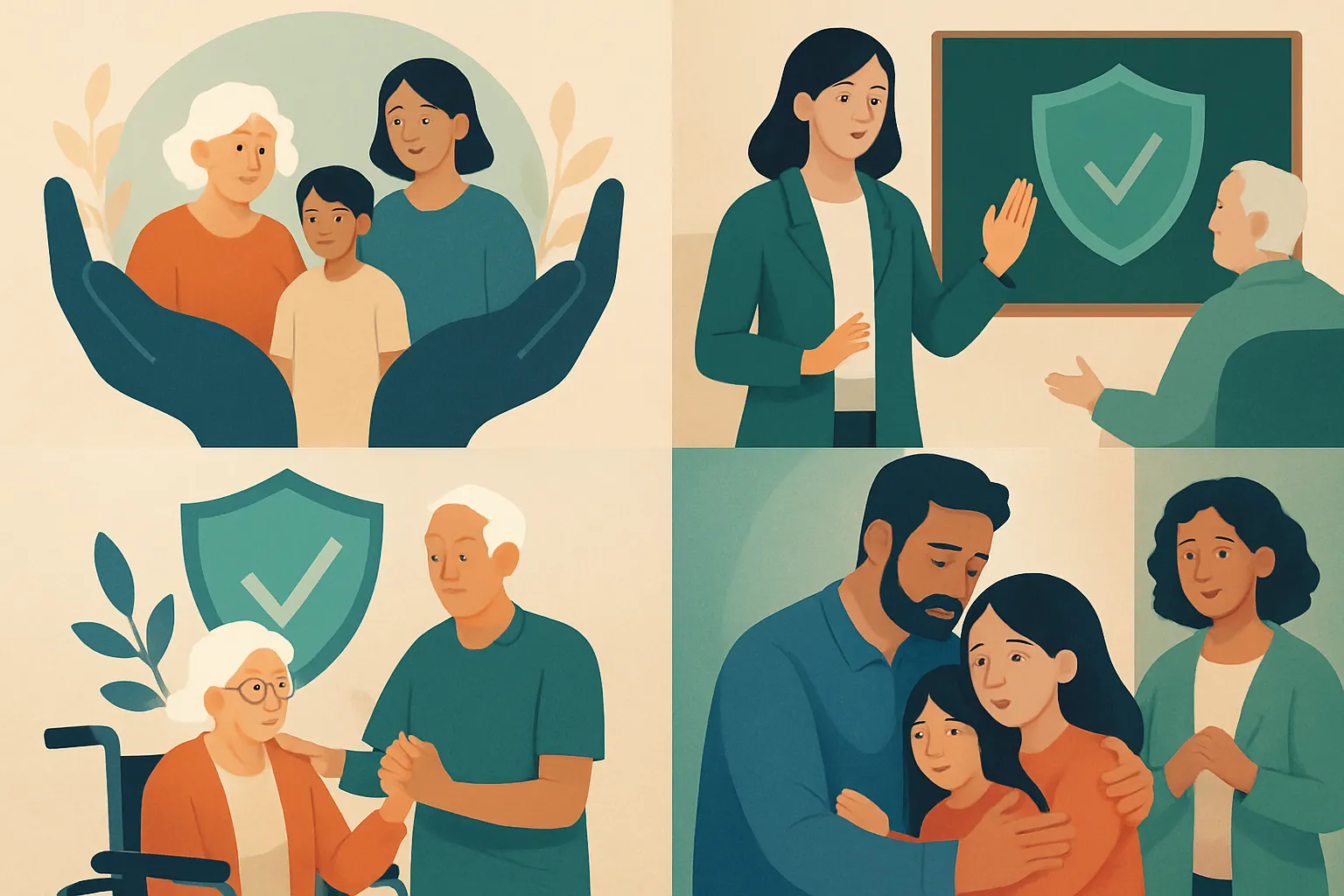Curriculum
- 15 Sections
- 15 Lessons
- 2 Weeks
- Understanding Your Role2
- Duty of Care2
- Equality and diversity2
- Person-centred care and empowerment2
- Communication2
- Privacy and dignity2
- Fluids and nutrition2
- Awareness of mental health, dementia and learning disabilities2
- Safeguarding adults2
- Safeguarding children2
- Basic life support2
- Health and safety2
- Handling information2
- Infection prevention and control2
- Understanding learning disabilities and autism2
Curriculum
Safeguarding adults
Learning Objective:
Learn to protect adults from abuse and neglect, recognize signs, and respond to concerns according to legal and professional standards.
Recognizing abuse and neglect

Abuse and neglect in health and social care settings involve actions or lack of action leading to harm or failure to meet an individual’s needs. These can be physical, emotional, financial, or neglectful. Recognizing signs early, such as a faulty hoist endangering a resident or not leaving someone alone when they’re at risk, is crucial for prevention.
- Physical Abuse
- Emotional Abuse
- Neglect
Includes hitting, pushing, or improper use of medications. Indicators include unexplained bruises or refusal to see the same caregiver.
Encompasses intimidation, humiliation, or isolation. Signs are unusual withdrawal or changes in personality.
Failure to provide basic needs like food, warmth, or medical care. Signs might be poor health hygiene or untreated medical issues.
Responding and reporting incidents

When responding to safeguarding concerns, it is vital to remain calm and professional. Listen to the individual without judging, accurately record the details of the complaint, and report it to your manager or the appropriate authority as prescribed in your organization’s procedures.
- Step 1: Stay Calm
- Step 2: Listen Carefully
- Step 3: Record Precise Details
- Step 4: Report Using Your Organization’s Process
Maintain a calm demeanor to reassure the individual and demonstrate professional behavior.
Give full attention to the person, allowing them to describe their concern or experience in their own words without interruption.
Document the information accurately, noting specific times, places, and people involved.
Follow your workplace’s established procedures to report the safeguarding concern promptly.
Whistleblowing and policies

Whistleblowing is the act of reporting unsafe or illegal practices within an organization. The legal framework protects whistleblowers who report in good faith, recognizing it as a crucial element of safeguarding policies to promote transparency and safety.
Learn more about whistleblowing protections and organisational policies
- What constitutes whistleblowing:
- Legal Protections:
- Safe Reporting Procedures:
Reporting actions like neglect, abuse, or poor practices that endanger individuals.
Laws such as the Public Interest Disclosure Act offer protection to employees who expose wrongdoing.
Use designated channels within your organization, ensuring reports are confidential and taken seriously. Real-life examples include employees raising alarms about neglect in care facilities, leading to improved practices.
Creating safe environments

A safe care environment ensures controlled risks, adherence to safety protocols, and regular risk assessments. This aligns with the principles of dignity and respect, advocating for an environment that protects all individuals under care.
- Follow Risk Assessments
- Immediately Report Hazards
- Maintain Confidentiality
Adhere to and update risk assessments regularly to minimize potential hazards.
Promptly address and communicate any identified risks to the appropriate personnel.
Ensure that all personal data is protected and only shared with consent and relevance to care.
Understanding consent and capacity

In safeguarding adults, understanding consent and capacity is critical. Consent involves ensuring individuals understand the risks and benefits of any decision, empowering them to make informed choices about their care. Capacity refers to the ability to understand and make decisions.
- Step 1: Communicate Clearly
- Step 2: Assess Understanding
- Step 3: Document Communication and Decisions
- Preventive Measures:
- Responsive Actions
- Step 1: Provide Clear Information About Rights
- Step 2: Encourage Involvement in Decision-Making
- Step 3: Support Informed Choices
- Remain Calm and Professional
- Record Details Accurately
- Report Immediately
- Follow-up on the Concern
- Am I protected if I report?
- Will I face retaliation?
- Can whistleblowing improve care?
Use language that is easy to understand, avoiding jargon, and ensuring the individual fully grasps the situation.
Check that the person comprehends the information provided and can make an informed decision.
Record the details of the conversation and any decisions made, highlighting the individual’s understanding and consent.
What is Safeguarding

Safeguarding encompasses strategies to protect vulnerable individuals from harm, emphasizing preventive measures and responsive actions to ensure safety and dignity for all individuals under care.
Explore More About Safeguarding
Develop proactive strategies to identify and mitigate potential risks before they lead to harm.
Immediate intervention and support following a concern or complaint to protect the individual and prevent recurrence.
Enhance your knowledge with additional resources like the Safeguarding Fact-sheet, available for download to provide structured insights into maintaining high standards of care.
Signs and Indicators

Recognizing the signs and indicators of abuse and neglect is essential in early intervention. Observing physical, behavioral, and environmental indicators help care workers to act promptly, preventing the escalation of harm and ensuring a safer environment for all.
Empowering individuals to self-protect and make informed decisions

Safeguarding aims to empower individuals by supporting them to understand their rights and how to protect themselves. By providing the right information and supportive environment, individuals can make informed decisions about their lives and care plans.
Ensure individuals are aware of their rights related to care and protection under the law.
Actively involve individuals in discussions regarding their care options to promote autonomy.
Assist them to weigh options and potential outcomes, reinforcing self-efficacy and independence.
Responding to Concerns

Responding to safeguarding concerns requires a structured approach, emphasizing clear, respectful communication and adherence to organizational protocols. Addressing these concerns promptly can prevent harm and enhance trust in the care environment.
Approach each situation with composure to foster a sense of security.
Capture precise information regarding the concern, including dates and specifics.
Communicate the issue to the appropriate authority without delay to ensure timely intervention.
Ensure resolution by checking on the status of reported issues and maintaining open communication.
Whistleblowing

In the context of safeguarding adults, whistleblowing plays a crucial role in addressing unsafe practices. It is the responsibility of care workers to report any unethical practices, supported by legal protections to ensure their safety and that of those under their care.
Yes, reporting unsafe practices in good faith is protected by law.
Legal frameworks prohibit retaliation against employees who report genuine concerns.
Yes, it often leads to better practices and safer environments for both workers and individuals receiving care.